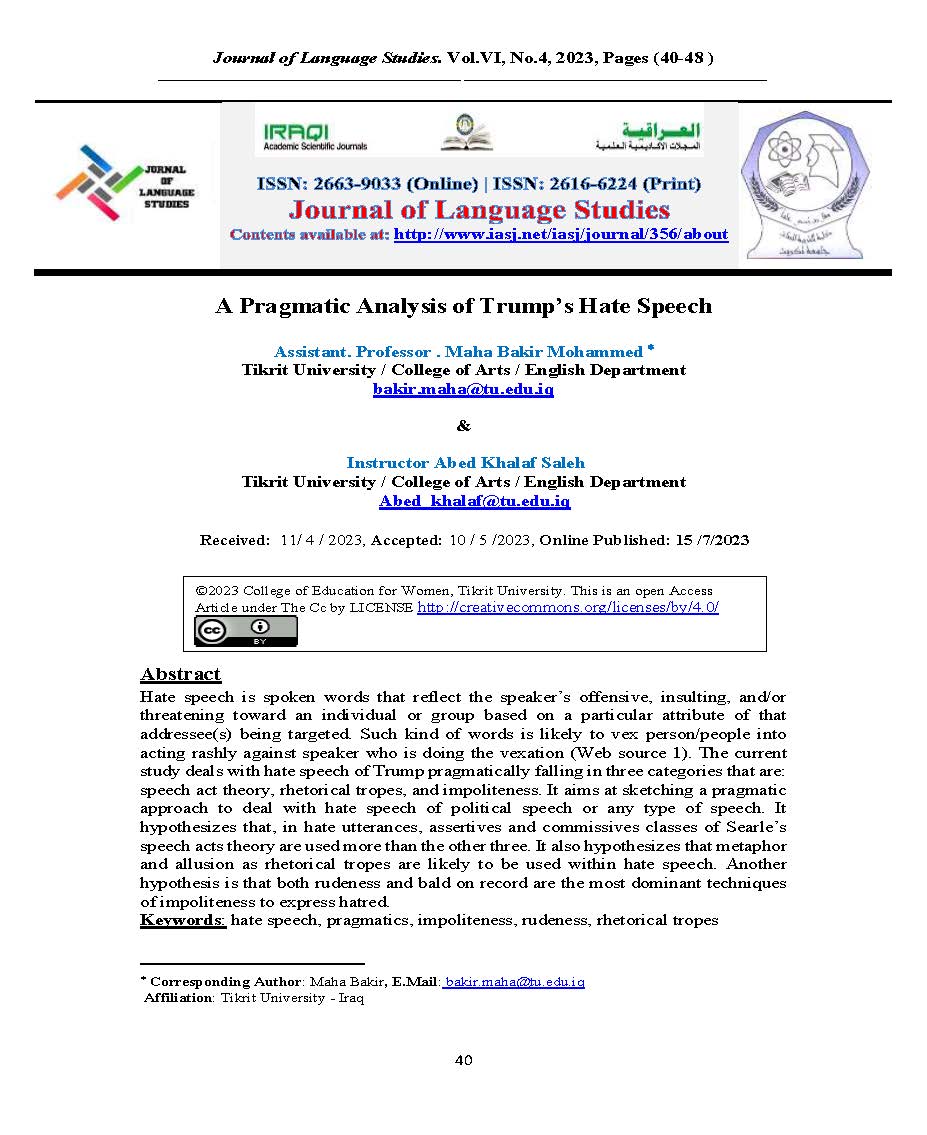A Pragmatic Analysis of Trump’s Hate Speech
DOI:
https://doi.org/10.25130/jls.6.4.1.16Keywords:
hate speech, pragmatics, impoliteness, rudeness, rhetorical tropesAbstract
Hate speech is spoken words that reflect the speaker’s offensive, insulting, and/or threatening toward an individual or group based on a particular attribute of that addressee(s) being targeted. Such kind of words is likely to vex person/people into acting rashly against speaker who is doing the vexation (Web source 1). The current study deals with hate speech of Trump pragmatically falling in three categories that are: speech act theory, rhetorical tropes, and impoliteness. It aims at sketching a pragmatic approach to deal with hate speech of political speech or any type of speech. It hypothesizes that, in hate utterances, assertives and commissives classes of Searle’s speech acts theory are used more than the other three. It also hypothesizes that metaphor and allusion as rhetorical tropes are likely to be used within hate speech. Another hypothesis is that both rudeness and bald on record are the most dominant techniques of impoliteness to express hatred.

